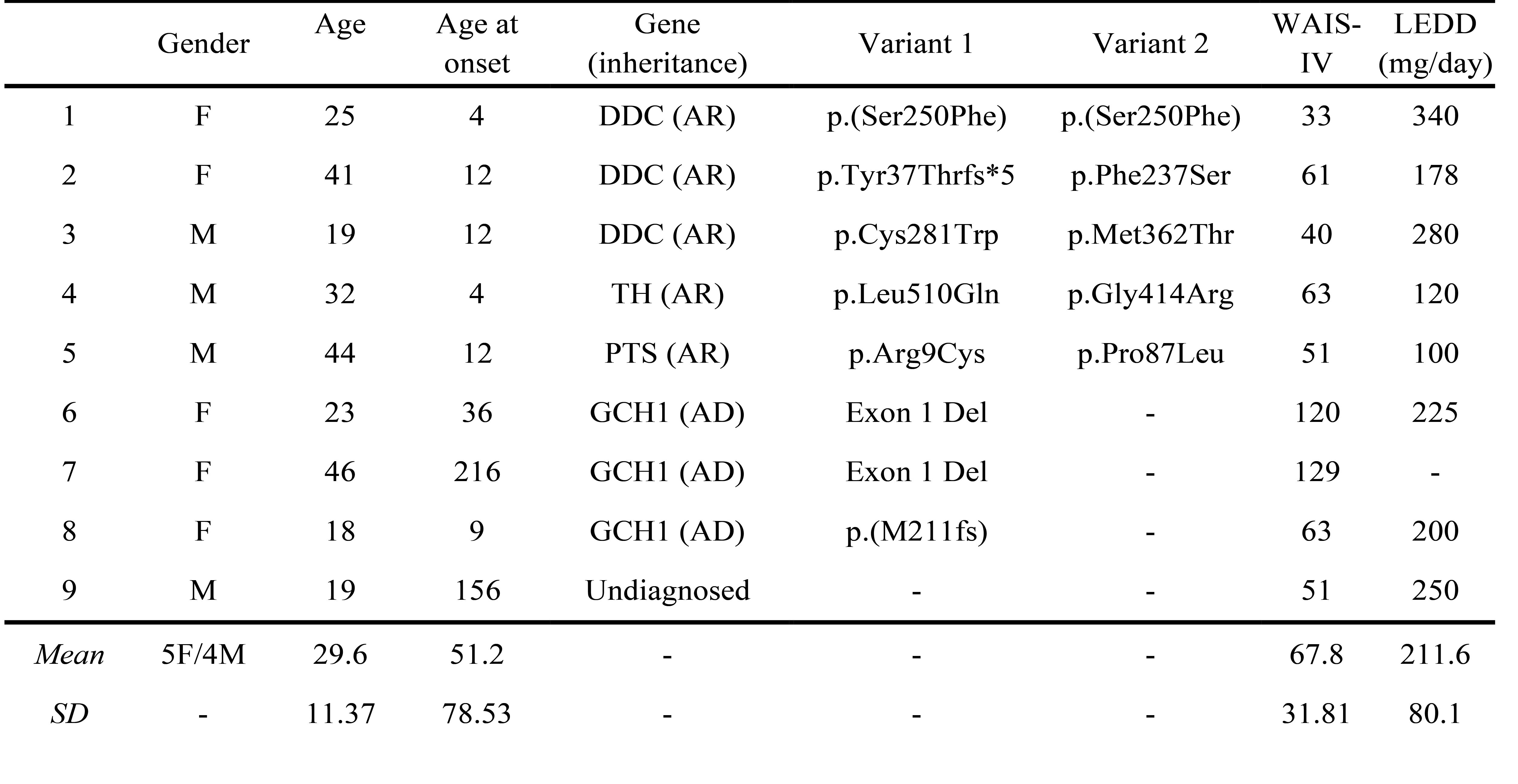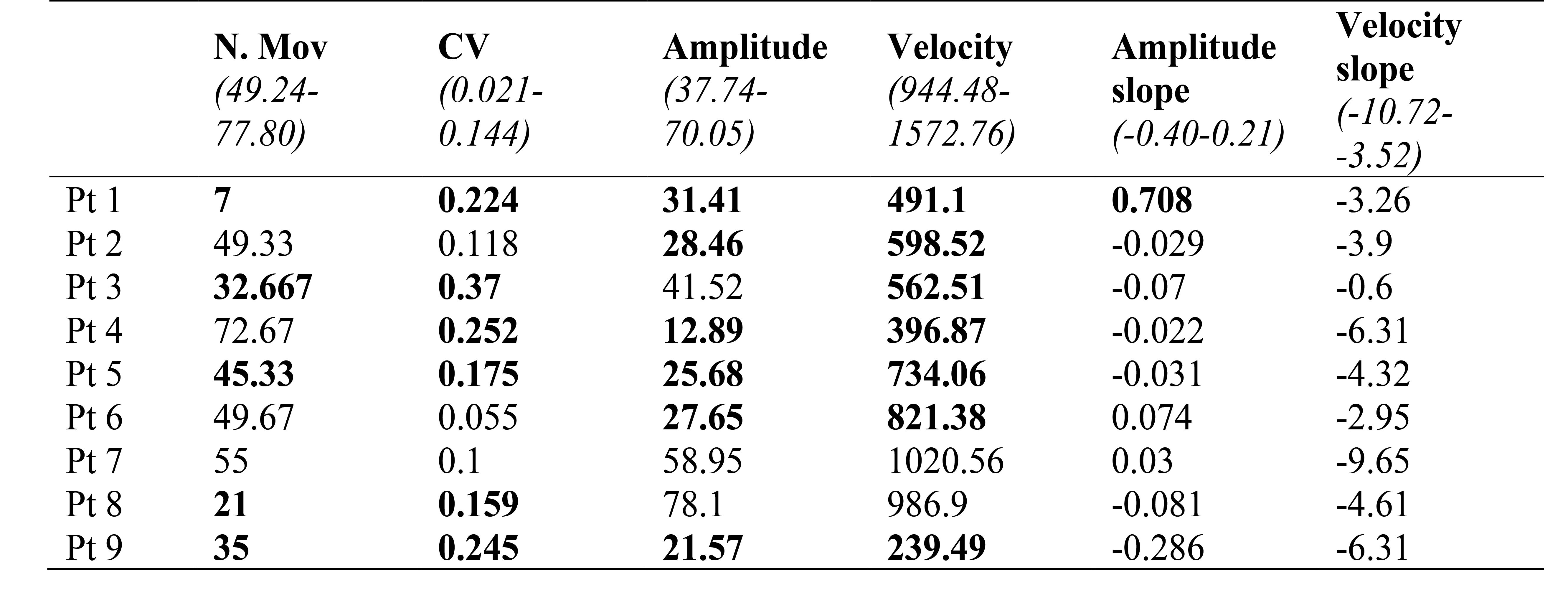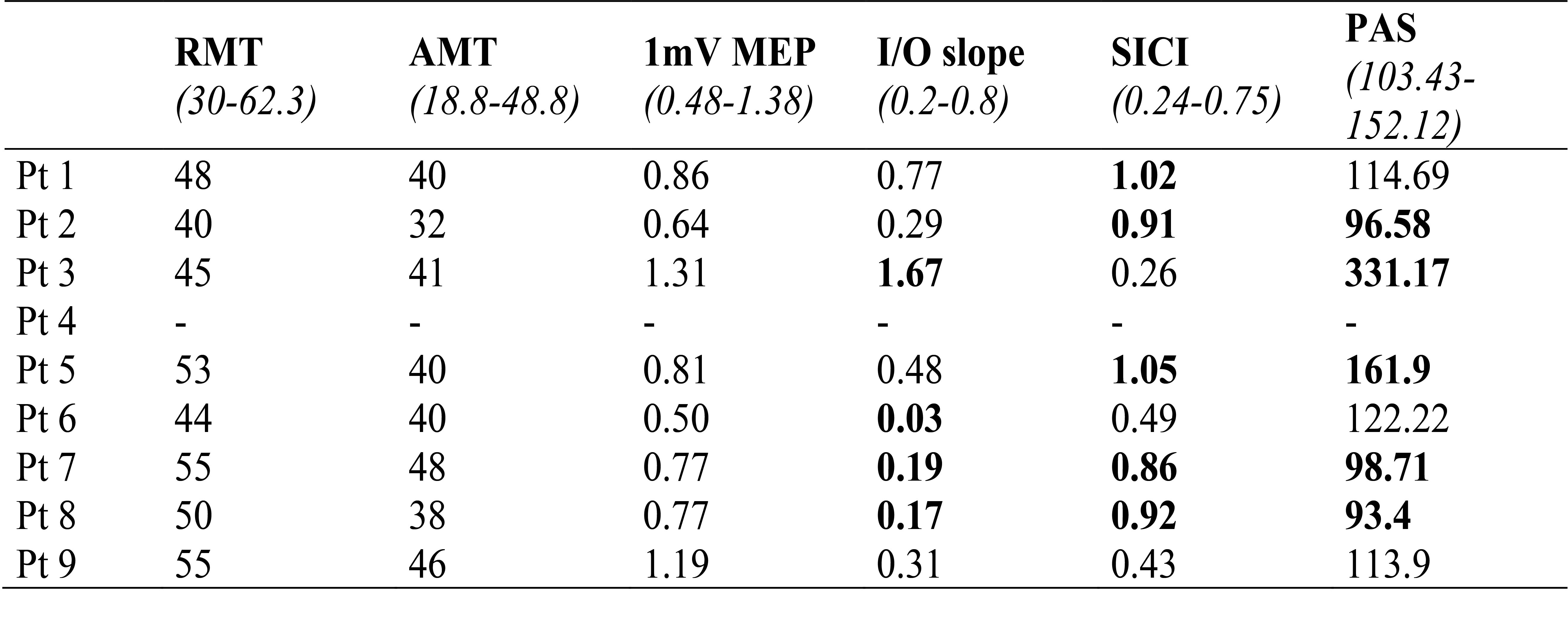Category: Neurophysiology (Non-PD)
Objective: No previous studies investigated voluntary movements abnormalities and their neurophysiological correlates in primary monoamine neurotransmitters (NT) disorders.
Background: Juvenile parkinsonism is a rare condition due to various causes, including inherited primary NT disorders, a group of potentially treatable inborn errors of metabolism.
Method: Nine monoamine NT disorders patients and 16 age-matched healthy controls (HCs) were enrolled. Objective measurements of repetitive finger tapping were obtained using a motion analysis system. The excitability of the primary motor cortex (M1) was assessed by recording the input/output (I/O) curve of the motor-evoked potentials (MEP) and using a conditioning-test paradigm for the assessment of short-interval intracortical inhibition (SICI). Plasticity-like mechanisms of M1 were indexed according to the amplitude changes in MEP after the paired associative stimulation (PAS) protocol. Patients’ values 2 standard deviation (SD) aside from the average of the HCs values were considered abnormal.
Results: Patients with aromatic aminoacid decarboxylase, tyrosine hydroxylase and 6-pyruvoyl-tetrahydropterin synthase defects showed markedly reduced velocity (5 out of 5 patients, 100%), reduced movement amplitude and an irregular movement rhythm (4/5 patients, 80%). Conversely, most of the patients with GTP cyclohydrolase I deficiency showed parameters within the normal range (2/3, 66.6%). Interestingly, no patient had a progressive reduction of movement amplitude and velocity during the tapping sequence, i.e., no sequence effect (0%, 0/9) [table 1]. The prominent TMS abnormality in patients was the reduction of SICI (55.5%, 5/9). Also, GTP cyclohydrolase I deficiency patients had a reduction of corticospinal excitability, as shown by a flatter I/O curve (3/3, 100%) and a reduced response to PAS (2/3, 66.6%) [table 2]. Finally, movement velocity inversely correlated with the I/O curve slope in patients (R=-0.78, p=0.036).
Conclusion: We provided an objective assessment of finger tapping abnormalities in monoamine NT disorder. We demonstrated a relation between movement slowness and excitability changes of M1. Our results may be interpreted for a better understanding of the pathophysiology of juvenile parkinsonism due to dopamine deficiency.
To cite this abstract in AMA style:
M. Passaretti, L. Pollini, G. Paparella, A. de Biase, D. Colella, S. Galosi, F. Manti, A. Guerra, V. Leuzzi, A. Berardelli, M. Bologna. Neurophysiological Assessment of Juvenile Parkinsonism due to Primary Monoamine Neurotransmitters Disorders [abstract]. Mov Disord. 2022; 37 (suppl 2). https://www.mdsabstracts.org/abstract/neurophysiological-assessment-of-juvenile-parkinsonism-due-to-primary-monoamine-neurotransmitters-disorders/. Accessed January 4, 2026.« Back to 2022 International Congress
MDS Abstracts - https://www.mdsabstracts.org/abstract/neurophysiological-assessment-of-juvenile-parkinsonism-due-to-primary-monoamine-neurotransmitters-disorders/



